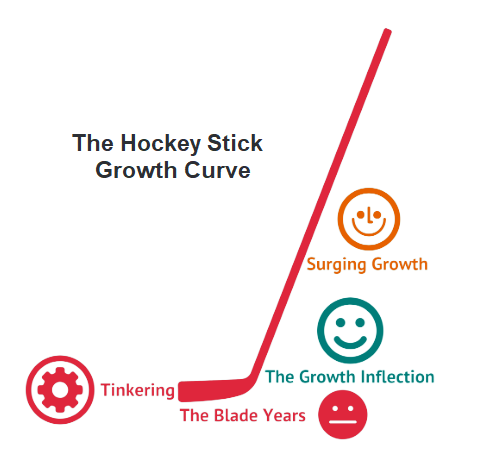The Hockey stick growth
What is hockey stick growth?
Hockey stick growth is a pattern in a line chart that shows sudden and extremely rapid growth after a long period of linear growth. The line connecting the data points resembles the shape of a hockey stick.
The term is often used to describe what happens when a startup finds its market niche and market conditions are positive. This term is also used in the sciences when plotted data follows the same trend.
Hockey stick charts illustrate dramatic shifts and explosive growth. These charts are characterized by a sharp increase after a relatively flat or quiet period. Initially, there's a period of little growth or stagnation, which is followed by an inflection point that turns into rapid growth. At some point, the exponential growth is likely to level off and linear growth continue.
Over 96% of new businesses fail in the first 10 years. But in some cases, like Groupon, startups cross the $1 billion mark in just their initial years.
Such growth isn’t new. Several startups, including Amazon and Facebook, saw their metrics shot up dramatically to form the shape of a hockey stick.
.png)
The four stages of hockey stick growth
Author and entrepreneur Bobby Martin conducted a study of 172 start-ups to determine how hockey stick revenue growth could be replicated. Martin, who analyzed companies such as Amazon, Netflix, and Google, found that revenue growth follows a typical pattern across four crucial stages:
- Tinkering – the initial stage where entrepreneurs commit to taking a new idea seriously by developing it into a viable business.
- The blade years – these are the first three or four years where the founders work long with little to show for their efforts. The blade years are characterized by limited revenue growth, but Martin also noted that some companies may not be making any revenue whatsoever.
- The growth inflection – or the point where something in the start-up achieves critical mass. The business model is refined, scalable, and there is a small yet appreciable increase in revenue growth.
- Surging growth – in the last stage, the rate of revenue growth continues to increase as the business model starts to scale.
